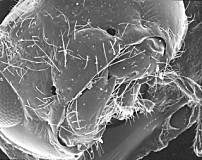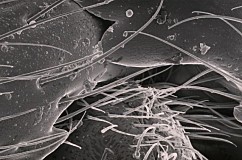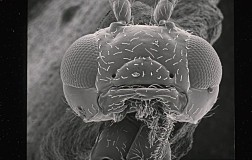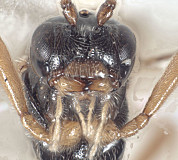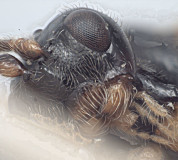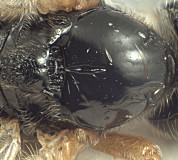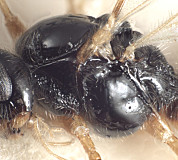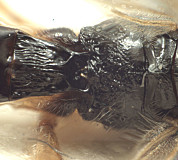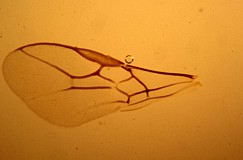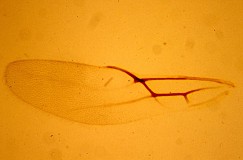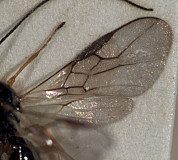Biosteres Foerster, 1862
In the late 1800s, with works such as Marshall in Andre (1891), Biosteres was redefined largely on the basis of the short second submarginal cell, concealed clypeus, and incomplete occipital carina. Fischer (1972) revived this concept for his classification of Opiinae. Wharton (1988) noted that many of the species fitting this description did not appear to be closely related and included additional features that more narrowly restricted the definition of Biosteres. This resulted in the removal of species now placed in genera such as Fopius and Diachasmimorpha.
Type locality of type species: Germany; original type specimen lost, neotype male in Institut Royal des Sciences Naturelles de Belgique, Brussels, designated by Wharton (1987).
Used as a subgenus of Opius by Fischer starting about 1957 (e. g. Fischer 1957), with more formal redescription in Fischer (1959). Re-established as a genus in Fischer (1967). Accepted as genus by most subsequent authors, though with some disagreement about status (Tobias 1977, Tobias and Jakimavicius 1986).
Valid genus.
Biosteres is a large genus with many valid species. Fischer (1972) divided Biosteres largely on the basis of sculptural characteristics, with Biosteres s.s. characterized by reduced sculpture, as represented by the loss of sculpture in the precoxal sulcus. Fischer (1972) used the name Chilotrichia for species that were more heavily sculptured, but Chilotrichia has also been treated as a separate genus on the basis of mandibular and clypeal characteristics. The type species of both Stenospilus Foerster, 1862 and Zetetes Foerster, 1862 also have sculptured precoxal sulci, and since Zetetes is a junior homonym, Stenospilus would be the oldest available name for those species with a sculptured precoxal sulcus. The scutellum is also heavily sculptured in some species of Biosteres, but sculpture on the scutellum is not always correlated with sculpture on the precoxal sulcus.

